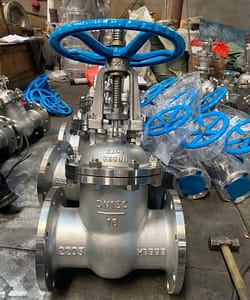Why Close or Open Gate Ralve Half Turn?
First, the basic structure of the gate valve.
The gate valve is a kind of lift by the gate to cut off the slurry, with simple structure, wear resistance, good sealing, easy operation and so on. Its basic structure includes valve body, gate plate, packing, movable bearing and manual device.
Second, why should the gate valve return half a circle.
1.the closing and opening of the gate valve need to be completed by the movement of the gate, and the opening or closing of the gate needs to be rotated at a certain Angle. The half turn is to ensure the tightness and stability of the valve.
2.at the same time, the steel material has a certain elasticity, and the half circle is to prevent exceeding its elastic deformation range, resulting in screw damage.

Third, the role of half a circle.
1.Ensure the normal opening and closing of the valve. Because the disc of the gate valve needs to be rotated at a specific Angle to complete the opening and closing, and a half turn is just the best Angle to achieve this purpose.
2.Ensure the tightness of the valve. The sealing surface of the valve is in close contact with the sealing surface of the valve seat, and a half turn can ensure that the sealing surface can be fully contacted to achieve the sealing of the valve.
3.Avoid valve damage. If the gate valve is not turned half a turn when opening or closing, the gate may be stuck or damaged, which will affect the normal service life of the valve. Gate valve is a common valve, half circle is to ensure its normal opening and closing, so as to improve the tightness and stability of the valve, at the same time because the steel material has a certain elastic deformation, through the way of half circle, you can avoid valve damage. When using the gate valve, attention should be paid to its sealing and rotation Angle, and if there is a problem, it should be repaired or replaced in time.
Learn more our project quality managemet, QAQC and third party inspection (TPI), NDT practices thru below link.
